
Marja Toivonen: Future prospects of knowledge-intensive business services

Marja Toivonen, Foresight Project Manager,
Employment and Economic Development Centre for Uusimaa, Helsinki
Future prospects of knowledge-intensive business services (KIBS)
Knowledge-intensive business services (KIBS) are arousing more and more interest as they have been argued to be an important part of the knowledge infrastructure in present economies. While serving numerous clients KIBS carry new ideas and best practice experience from one firm to another, and in this way they function as facilitators and disseminators of innovations. Studies indicate that KIBS themselves are innovative, too: the KIBS sector has been found to be one of the most innovative sub-sectors within the services. IT services, R&D services, technical consultancy, legal, financial and management consultancy, and marketing communications are typical KIBS industries.
A futures perspective is essential from the viewpoint of innovation. KIBS have not, however, been systematically examined from this perspective. A recently published study by the author intends to fill the gap in its part. The study has applied the so-called foresight approach which, instead of predicting, focuses on understanding new phenomena and futures dimensions of on-going processes. The significance of historical analysis as a basis for foresight has also been stressed in the study: the study includes a review of the long-term development of KIBS.
The study has mapped the future of KIBS both generally, and particularly from the innovation perspective. The general examination consists of analysis of driving forces, strong prospective trends and weak signals. Driving forces refer to those phenomena at the level of the entire economy that constitute the framework for the future of KIBS. Strong prospective trends and weak signals outline the internal development of KIBS: the main lines of development and unexpected outturns. In the analysis of innovation activities, new promising innovation opportunities, the generality of innovation activities, and new spheres of skills have been explored. Both literature and empirical material were used as information sources; the empirical material was collected in the Finnish KIBS sector by face-to-face interviews.
Three driving forces particularly relevant for KIBS were identified: the development of information and communication technologies, networking and new business models, and the globalisation of the economy. The main lines of KIBS’ own development were crystallised in eight trends: increasing demand for KIBS together with emphasis on their qualified use, tightening linkages of KIBS to clients’ strategies, increasing importance of client-specific know-how, broadening of the service content, spreading of consultative working procedures, convergence among KIBS and between KIBS and other sectors, concentration tendencies, and diversification of international activities. The weak signals identified concern the emergence of KIBS specialised in coordination of services, strengthening of the position of KIBS over their clients, and the possibility that clients start selling their in-house services to each other. As regards KIBS’ innovation activities, an important finding was that promising fields for innovation also exist in the non-technological KIBS, which earlier have only been studied to a small extent. In the area of skills, KIBS face a challenge to reconcile very different, partly opposite, requirements; combining expertise and entrepreneurship can be mentioned as an example.
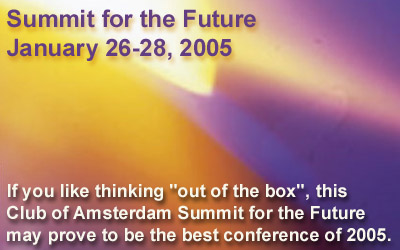
News about the Future

RealClimate
RealClimate is a commentary site on climate science by working climate scientists for the interested public and journalists. We aim to provide a quick response to developing stories and provide the context sometimes missing in mainstream commentary. The discussion here is restricted to scientific topics and will not get involved in any political or economic implications of the science.

Photovoltaic: Direct energy from the sun
The name comes from the principle in which “photons” (units of light) fall on a cell, generating a “voltage”.
Two projects on photovoltaic electricity production supported by the EU:
An alternative to silicon (Project PROCIS): Researchers from Sweden, Germany, France and Switzerland have developed an efficient low-cost technology, using alternatives to silicon (CIS), to generate cheaper solar cell modules. This is the start of the next generation of cost-effective solar-module processing technology.
“Roll-to-Roll” photovoltaic modules (Project H-Alpha-Solar): Silicon remains a key material in photovoltaic technology – but how to make it more flexible and cheaper? Researchers from France, Portugal and the Netherlands collaborated to develop new thin film technology which paves the way towards cost effective mass production of silicon-based solar energy devices.
Summit Highlights
 Stefan Schneider Chief International Economist, Head of Macro Trends Deutsche Bank Research Summit for the Future: Trade / Service Industry Stefan Schneider works on trends in economics, society and technology which are relevant to the company and analyses international developments on the financial market. Key trends of the next decades – massive opportunities for the services industry | ||
| Enlarging scope of life – affluent people are getting older and more demandingSocial frictions will increase demand for security servicesKnowledge intensive production makes educational services key Stefan Schneider and his team identify future trends and analyse the investment implications they provide for Deutsche Bank and its clients. | ||
 Arnulf Grübler IIASA – International Institute for Applied Systems Analysis Summit for the Future: Energy One of the few who has studied energy systems over the last and the next 100 years The Energy Challenges for the 21st Century The talk will offer a truly long-term view that enables to identify the key energy challenges of the 21st century. The key challenges are in stark contrast to current trends and policy perceptions in the energy field and include: 1. We are not running out of energy resources but will run out of “environment”, i.e. of the assimilative capacity of the biosphere to accept vastly increased waste streams of energy production and use. 2. The largest long-term future energy challenge lies in cities, in fact very big mega- even gigacities. Energy alternatives such as renewables as currently conceived offer no solution for the size and power densities characteristic of future hyper-urbanized areas particularly in the currently developing world. Radical new solutions are needed. 3. The biggest mismatch between current and future energy systems is the art of the long-view and the resulting enormous demand for technological innovation and radical systems change that the future demand from us now and in the near-term already. This is in stark contrast to our present shortsightedness and unwillingness to develop and to invest in long-term options generations. The future will punish those that do too little too late, ignoring the challenges of the future.  Paul Kafno Managing Director, HD Thames Summit for the Future: Media & Entertainment With a career in both commercial and public broadcasting, Paul knows how to use the right technology to share emotion. His productions have won a string of awards including Prix Italia, RTS, BAFTA, the Prix Gemini. Able to enthuse as well as amuse. Bye Bye Box? (or Is the Future Flat?) Europe’s television screens are getting bigger and flatter. What will we put on them? Programmes? Interactive games? More Hollywood? And from which tap – broadcast, broadband or disk? With an apparent profusion of choice, younger viewers seem too bored to watch, while the older ones claim they cannot find anything they like. With DVD triumphant, commercials easy to avoid and broadband steaming over the distant horizon, broadcasters are desperate to recapture their audience. So, will the future have us leaning back to yawn at the same old content or leaning forward to something exciting and genuinely new? And what might that something be? Paul Kafno explores the possibilities at Summit of the Future.  Bror Salmelin Head of Unit, New Working Environments Unit European Commission IST Programme Summit for the Future: Science & Technology Responsible for strategy planning and operations in the framework of the IST Research Programme. Technologies driving systemic innovation – The creative destruction of industry and enterprise eco-systems The organization of work is being changed by technologies that render geography irrelevant & computing ubiquitous. Technologies that facilitate communication, collaboration, mobility and knowledge sharing pervade the working lives of people. Technologies first applied in manufacturing – automation, work-flow and total quality are now routinely applied to research tasks. Radical change has happened to the way individuals organize their work, but the greatest change will be to the dynamics of teams and to the structure of organisations themselves.  Kevin Dean Director, Public Sector Healthcare, Internet Business Solutions Group, Cisco Summit for the Future: Healthcare Kevin Dean is one of IBSG’s senior Directors, and focuses on public sector healthcare, helping Customers to develop their strategies and implementation plans for networked health information management and technology. The hospital of the future |
Recommended Book
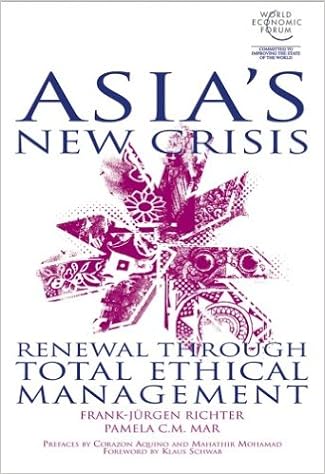 Asia’s New Crisis: Renewal Through Total Ethical Management by Frank-Jurgen Richter, Pamela C. M. Mar. Foreword by Klaus Schwab This book is a timely and much-needed attempt to provide a new, unique, and non-condescending framework for recreating an ethical dimension to Asian business. This should be required reading for all Asian business school students in the hope that history will not repeat itself? – Ho Kwong Ping, Chairman, Wah Chang International Corporation Pte Ltd Everyone has something worthwhile to say about ethics. The difficulty is that words are not deeds. And words are rarely converted into action unless they are proselytized with zeal, carried with passion, sustained by conviction and fortified by faith. This groundbreaking work skillfully edited by Frank-Jürgen Richter and Pamela C.M. Mar provides compelling motivation to live a life that is formed by truth and gripped by integrity. – Dr. Y.Y. Wong, Founder and Chairman, The Wyuy Capital Group This is a timely volume. Its broad sweep reveals an entire region coping with an ethical void, one which has deepened since the Asian financial crisis. What sets this book apart is its vision for the way forward. The book brings together highly respected thinkers and public figures from throughout the region, energizing the discussion on the role of ethics in society and providing a sound basis for a new consensus. – David KP Li, Chairman and Chief Executive Officer, The Bank of East Asia Ltd A stunning array of contributors only the World Economic Forum could pull together. Their case is powerful: without TEM (Total Ethics Management), you cannot grow. The time has now come to shift your attention from TQM (Total Quality Management) to TEM to tame Corporation. – Tomohiko Taniguchi, Editor-at-Large, Nikkei Business Publications This book could not be more timely. At a moment when public trust in the marketplace is near an all-time low, the authors’ work offers powerful insights into how the Asian social contract can be strengthened and renewed, drawing on the intellectual and philosophical traditions of the region itself. It is essential reading for anyone who is concerned about Asia’s future direction. – William J. Dobson, Asia Editor, Newsweek International An enlightening compass for all leaders who carry the promising Asian future on their shoulders. – Yoshiyuki Fujisawa, Chairman, Merrill Lynch Japan Securities Co. Ltd This excellent book, I hope, will serve as a timely reminder that if Asia wants to be competitive and claim for itself a place in the mainstream of international business, it will need to make a conscious decision to put ethical governance in the driving seat. – Tunku Abdul Aziz, President, Transparency International Malaysia |
Frank-Jurgen Richter, President, HORASIS As a seasoned advisor of several companies with global reach as well as of governments, Frank-Jürgen Richter has an unrivaled reputation for his ability to use distinctive scenarios on how to map the future. Prior to founding HORASIS Dr. Richter was Director of the World Economic Forum, in charge of Asian affairs. Summit for the Future 2005: Trade / Service Industry |
Arctic Climate Change and Its Impacts
Arctic Climate Change and Its Impacts
The Arctic Climate Impact Assessment (ACIA) represents the first effort to comprehensively examine climate change and its impacts in the Arctic region. The ACIA report focuses on impacts that are expected to occur within this century. The projected impacts described in the report are based on observed data and a moderate scenario of future warming, not a worst-case scenario.
[…] Eart’s climate is changing. with the global temperature now rising at a rate unprecedented in the experience of modem human society. While some historical changes in climate have resulted from natural causes and variations, the strength of the trends and the patterns of change that have emerged in recent decades indicate that human influences, resulting primarily from increased emissions of carbon dioxide and other greenhouse gases, have now become the dominant factor.
These climate changes are being experienced particularly intensely in the Arctic. Arctic average temperature has risen at almost twice the rate as the rest of the world in the past few decades. Widespread melting of glaciers and sea ice and rising pennafrost temperatures present additional evidence of strong arctic warming. These changes in the Arctic provide an early indication of the environmental and societal significance of global warming.
An acceleration of these climatic trends is projected to occur during this century, due to ongoing increases in concentrations of greenhouse gases in the earth’s atmosphere. While greenhouse gas emissions do not primarily originate in the Arctic, they are projected to bring wide-ranging changes and impacts to the Arctic. These arctic changes will. in turn, impact the planet as a whole. For this reason, people outside the Arctic have a great stake in what is happening there. For example, climatic processes unique to the Arctic have significant effects on global and regional climate. The Arctic also provides important natural resources to the rest of the world (such as oil, gas, and fish) that will be affected by climate change. And melting of arctic glaciers is one of the factors contributing to sea-level rise around the globe.
Climate change is also projected to result in major impacts inside the Arctic, some of which are already underway. Whether a particular impact is perceived as negative or positive often depends on one’s interests. For example, the reduction in sea ice is very likely to have devastating consequences for polar bears, ice-dependent seals, and local people for whom these animals are a primary food source. On the other hand, reduced sea ice is likely to increase marine access to the region’s resources, expanding opportunities for shipping and possibly for offshore oil extraction (although operations could be hampered initially by increasing movement of ice in some areas). Further complicating the issue, possible increases in environmental damage that often accompanies shipping and resource extraction could harm the marine habitat and negatively affect the health and traditional lifestyles of indigenous people.
Another example is that increased areas of tree growth in the Arctic could serve to take up carbon dioxide and supply more wood products and related employment, providing local and global economic benefits. […]
Are These Impacts Inevitable?
Carbon dioxide concentrations in the atmosphere, which have risen rapidly due to human activities, will remain elevated above natural levels for centuries, even if emissions were to cease immediately. Some continued warming is thus inevitable. However, the speed and amount of warming can be reduced if future emissions are limited sufficiently to stabilize the concentrations of greenhouse gases. The scenarios developed by the IPCC (Intergovernmental Panel on Climate Change) assume a variety of different societal developments, resulting in various plausible levels of future emissions. None of these scenarios assume implementation of explicit policies to reduce greenhouse gas emissions. Thus, atmospheric concentrations do not level off in these scenarios, but rather continue to rise, resulting in significant increases in temperature and sea level and widespread changes in precipitation. The costs and difficulties of adapting to such increases are very likely to increase significantly over time. […]
What is a Smart Community?
| What is a Smart Community? A Smart Community is a community with a vision of the future that involves the use of information and communication technologies in new and innovative ways to empower its residents, institutions and regions as a whole. As such, they make the most of the opportunities that new technologies afford – better health care delivery, better education and training and new business opportunities. The Smart Communities Program is a three-year federal program created and administered by Industry Canada to help Canada become a world leader in the development and use of information and communication technologies for economic, social and cultural development. The program’s goal is to help establish world-class Smart Communities across the country so that Canadians can fully realize the benefits that information and communication technologies have to offer. The program sets out the following objectives: |
| assist communities in developing and implementing sustainable Smart Communities strategies;create opportunities for learning through the sharing among communities of Smart activities, experiences and lessons learned;provide new business opportunities, domestically and internationally, for Canadian companies developing and delivering information and communication technology applications and services. |
| Communities around the world are responding to the needs of their citizens by discovering new ways of using information and communication technologies for economic, social and cultural development. Communities and countries that take advantage of these new technologies will create jobs and economic growth as well as improve the overall quality of life within their communities. To ensure that these objectives are reached, the federal government has established four interrelated program components: Smart Communities Demonstration Projects are the central focus of the program. Selected through a nationwide competition, these communities — one in each province, one in the North and one in an Aboriginal community — will be chosen for their world-class visions and strategies on how to achieve economic, social and cultural improvements through the use of information and communication technologies. As such, they will become centres of expertise in the integration of information and communication technologies into communities, organizations and families. Smart Communities will also act as “learning laboratories” in which the innovative use of these technologies in community life and enterprise will be tested. The Smart Communities Resource Exchange will act as a clearing house of resources that help support the creation of Smart Communities across Canada as well as provide information on related best practices, applications and technologies. It will also provide resources related to broadband technologies, research studies, and funding programs as well as information on current broadband use and trends in Canada. |
MIT OpenCourseWare
| MIT OpenCourseWare MIT OCW is a large-scale, Web-based electronic publishing initiative funded jointly by the William and Flora Hewlett Foundation, the Andrew W. Mellon Foundation, and MIT. MIT OCW’s goals are to: |
| Provide free, searchable, access to MIT’s course materials for educators, students, and self-learners around the world.Extend the reach and impact of MIT OCW and the “opencourseware” concept. |
| “MIT OCW would not be possible without the support and generosity of the MIT faculty who choose to share their research, pedagogy, and knowledge to benefit others. We expect MIT OCW to reach a steady – though never static – state by 2008. Between now and then, we will publish the materials from virtually all of MIT’s undergraduate and graduate courses.” “With the publication of 500 courses, MIT is delivering on the promise of OpenCourseWare that we made in 2001. We are thrilled that educators, students, and self-learners from all parts of the globe tell us that MIT OCW is having an impact on education and learning. We hope that in sharing MIT’s course materials, and our experience thus far with MIT OCW, we will inspire other institutions to openly share their course materials, creating a worldwide web of knowledge that will benefit mankind.” – Charles M. Vest, President of MIT |
Club of Amsterdam Upcoming Events
| October 27, 2004 | the future of ICT |
| .November 30, 2004 | the future of Developing Countries |
| .February 23, 2005 | the future of the Service Industry |
| .March 30, 2005 | the future of Water |
| .April 27, 2005 | the future of Branding |
| .June 1, 2005 | the future of Robotics |
| .June 29, 2005 | the future of Philosophy |




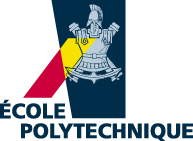

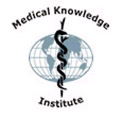




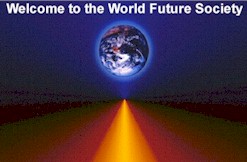


Customer Reviews
Thanks for submitting your comment!